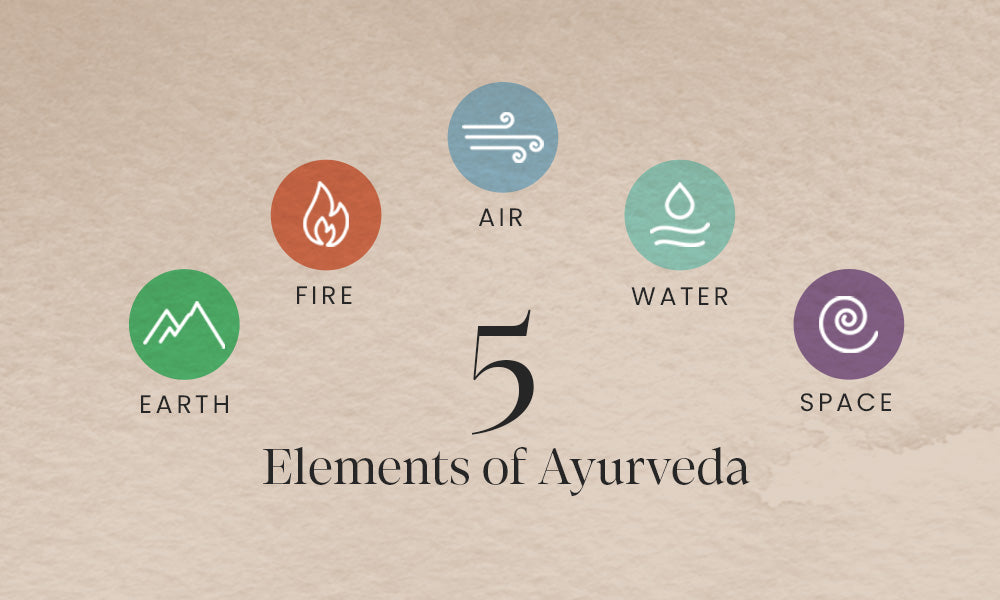The theory of five basic elements in Ayurveda is a holistic approach to understanding the human body, mind, and spirit. It is based on the concept that the universe is composed of five basic elements: space, air, fire, water, and earth. These elements are not only present in the external environment but also within the human body. The balance of these elements is essential for maintaining health and well-being.
Space (Akash)
Space is the most subtle of the five elements. It is the all-pervading element that contains all other elements. Space is associated with the sense of hearing and the quality of sound. It is responsible for creating a sense of freedom, peace, and expansion. When space is in balance, we feel open and connected to the world around us. When it is out of balance, we may feel isolated, disconnected, and anxious.
Air (Vayu)
Air is the element of movement. It is associated with the sense of touch and the quality of lightness. Air is responsible for respiration, circulation, and the movement of thoughts and emotions. When air is in balance, we feel energized, focused, and mentally clear. When it is out of balance, we may feel restless, anxious, or have difficulty concentrating.
Fire (Agni)
Fire is the element of transformation. It is associated with the sense of sight and the quality of heat. Fire is responsible for digestion, metabolism, and the production of energy. When fire is in balance, we feel warm, confident, and motivated. When it is out of balance, we may feel cold, lethargic, or have difficulty digesting food.
Water (Jala)
Water is the element of nourishment. It is associated with the sense of taste and the quality of wetness. Water is responsible for hydration, lubrication, and the transport of nutrients. When water is in balance, we feel nourished, hydrated, and emotionally stable. When it is out of balance, we may feel dehydrated, dry, or have difficulty digesting food.
Earth (Prithvi)
Earth is the element of stability. It is associated with the sense of smell and the quality of solidity. Earth is responsible for providing structure, support, and grounding. When earth is in balance, we feel grounded, stable, and secure. When it is out of balance, we may feel ungrounded, insecure, or have difficulty making decisions.
The balance of the five elements is essential for maintaining health and well-being. When the elements are in balance, we feel healthy, happy, and connected to the world around us. When they are out of balance, we may experience physical, mental, or emotional symptoms.
There are many ways to bring the elements into balance. Some of these include:
- Diet: Eating a balanced diet that includes foods from all five elements can help to bring the elements into balance.
- Exercise: Exercise can help to move the elements and promote balance.
- Yoga: Yoga poses can help to stimulate the elements and bring them into balance.
- Meditation: Meditation can help to calm the mind and bring the elements into balance.
- Ayurvedic treatments: Ayurvedic treatments, such as massage and herbal remedies, can help to bring the elements into balance.
By understanding the theory of five basic elements in Ayurveda, we can learn how to bring these elements into balance and achieve optimal health and well-being.
Blog article based on Ayurveda Today by Vasant Lad
From Volume 1, No. 1
THE SCIENCE OF CONSCIOUS LIVING AND LONGEVITY
Summer 1988
Frequently Asked Questions
Which is the most powerful element?
Each element in Ayurveda—space, air, fire, water, and earth—plays a vital role in your body and your journey. Imagine trying to choose the single most powerful note in a beloved song—they all blend to create harmony. In the same way, it is not about one element being above the others, but about all five dancing together in balance. When you tune in to your own balance, you’ll find the “most powerful” is simply the one that you need at that moment—sometimes a touch more grounding earth, other times the spark of fire for transformation.
How can I balance the five elements in my life?
Balancing your elements is an invitation to a more vivid, connected life. Begin simply—notice yourself: Are you feeling scattered (too much air), sluggish (excess earth), or perhaps overwhelmed (too much fire)? You can nurture balance by:
> Savoring foods and flavors from all elements.
> Moving your body—with gentle walking, invigorating yoga, or spirited dancing.
> Creating stillness and space with moments of quiet reflection or meditation.
> Seeking support through Ayurvedic practices like self-massage or herbal teas.
Let each day be a gentle experiment. When you listen deeply to yourself, the elements will offer new harmony.
What are the benefits of balancing the five elements in Ayurveda?
When the five elements are in graceful flow within you, life becomes more vibrant. You might notice clearer thoughts, steadier energy, and a softening of old aches—both physical and emotional. Balance nurtures your digestion, uplifts your mood, hydrates your body, and roots you in resilience. Perhaps most beautifully, this balance awakens a greater sense of peace and connection—with both your inner self and the world you move through. As you heal, you help to ignite healing for those around you—this is the quiet magic of Ayurveda.
Can Ayurveda's five elements help in weight management?
Yes, the five elements can be wise guides on your path to a healthy weight. Ayurveda views weight as more than numbers—it’s a reflection of elemental balance. For example, if earth and water are too dominant, you may feel heavy or sluggish; if fire blazes too brightly, digestion may be too quick. By understanding the qualities at play and gently adjusting diet, movement, and daily habits, you invite your body to discover its natural state of balance—one that supports vitality and joy, rather than focusing on restriction.
Which finger is the fire element?
The fire element, called Agni, is beautifully represented by your thumb. Just as fire transforms and ignites, your thumb stands strong in the hand—essential for grasp, creation, and connection. Try this: bring your thumb and ring finger together in a simple hand gesture (mudra). This little spark can help stoke your inner warmth, confidence, and motivation whenever you need it most.








